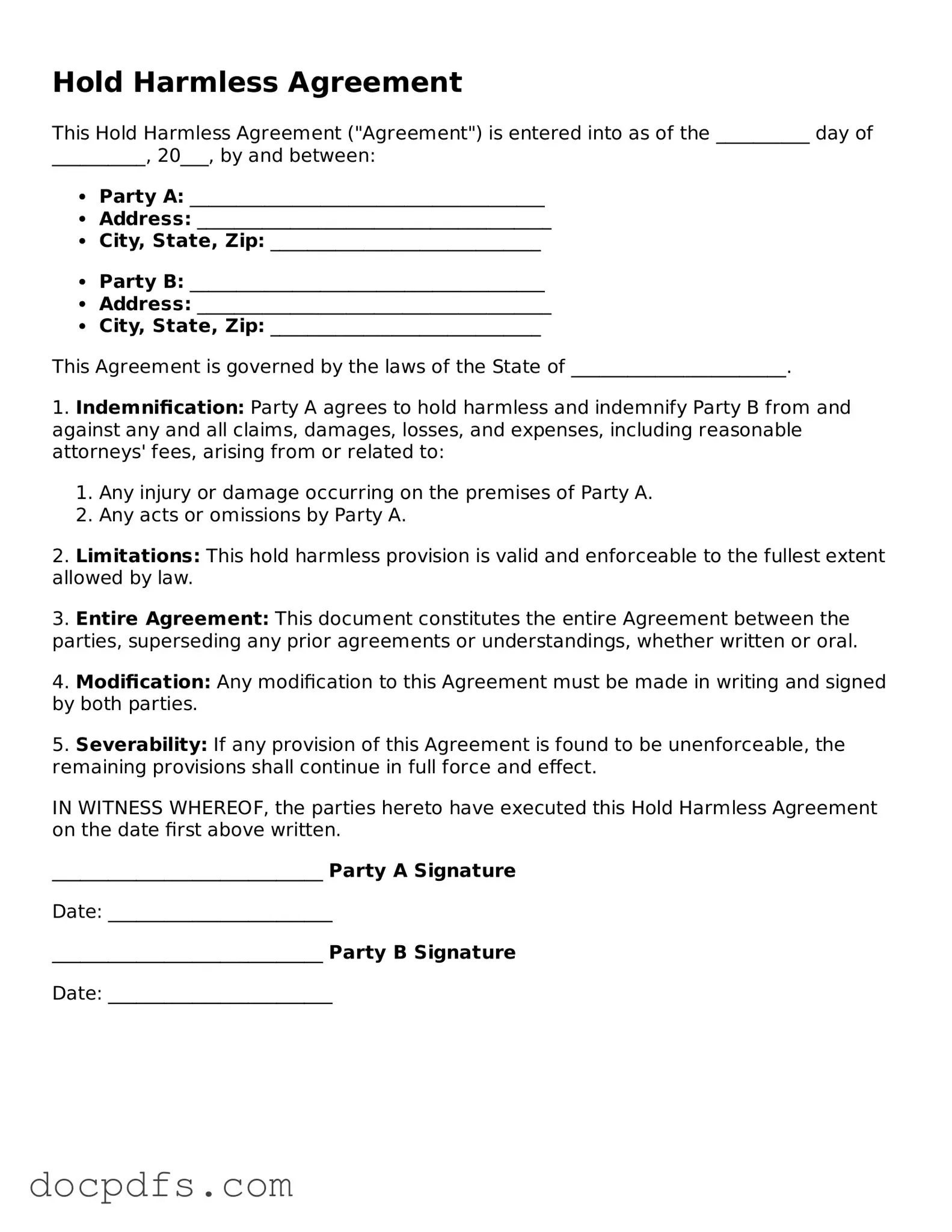What is a Hold Harmless Agreement?
A Hold Harmless Agreement is a legal document in which one party agrees to not hold another party responsible for any damages or losses that may occur. This agreement can be used in various situations, such as during events, construction projects, or when using someone else's property.
Why would someone use a Hold Harmless Agreement?
People use Hold Harmless Agreements to protect themselves from liability. For example, if you are organizing an event at a public park, you might ask participants to sign this agreement. It helps ensure that if someone gets injured, they cannot sue you for damages.
Who should sign a Hold Harmless Agreement?
Typically, the party that is assuming the risk should sign the agreement. This could be an individual, a group, or a business. The other party, often the one providing a service or facility, should also sign to acknowledge the terms.
What should be included in a Hold Harmless Agreement?
A Hold Harmless Agreement should include:
-
The names of the parties involved.
-
A clear description of the activities or events covered.
-
The scope of the liability being waived.
-
Any specific terms or conditions that apply.
-
Signatures of all parties involved.
Is a Hold Harmless Agreement legally binding?
Yes, a Hold Harmless Agreement can be legally binding if it meets certain conditions. It must be clear, voluntary, and not against public policy. Courts generally enforce these agreements unless they are deemed unfair or overly broad.
Can a Hold Harmless Agreement protect against gross negligence?
Generally, a Hold Harmless Agreement cannot protect a party from liability for gross negligence or willful misconduct. If someone acts with extreme carelessness or intent to harm, courts may not uphold the agreement.
How do I create a Hold Harmless Agreement?
Creating a Hold Harmless Agreement can be straightforward. You can find templates online or consult with a legal professional. Ensure that the document is tailored to your specific situation and includes all necessary details.
What should I do if someone refuses to sign a Hold Harmless Agreement?
If someone refuses to sign, consider discussing their concerns. They may need clarification about the agreement's purpose. If they still refuse, you may need to evaluate whether to proceed with the activity or find alternative arrangements to mitigate risk.
